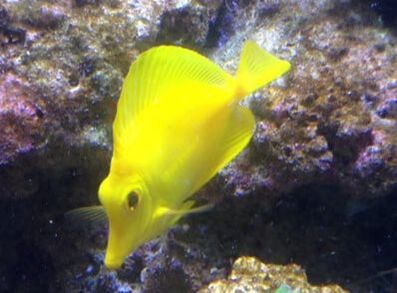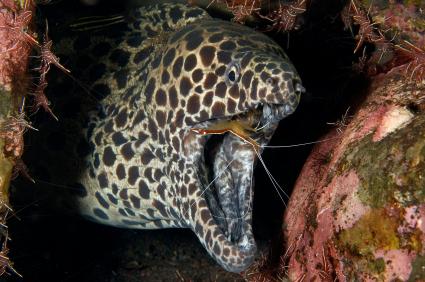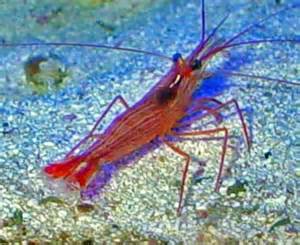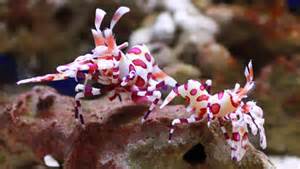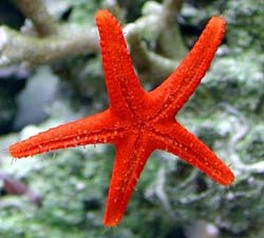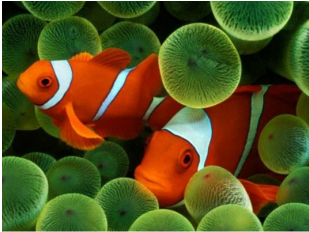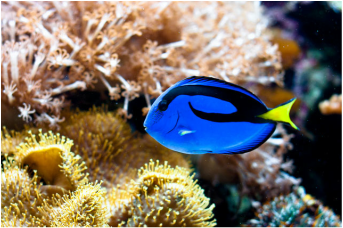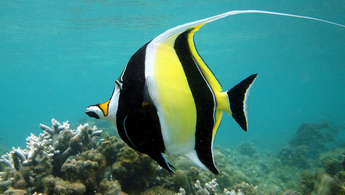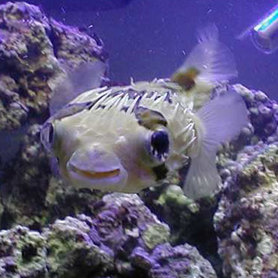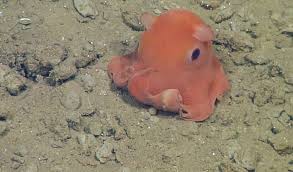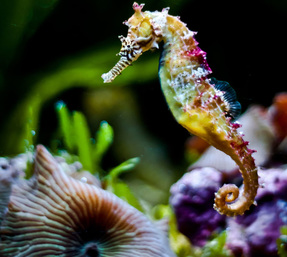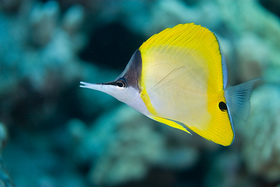Life on the Reef
This link takes your to a YouTube video that lasts over an hour, it will sweep you away with the gentle sound of rain and images of all of the reefs' complex interactions. View dolphins to sea turtles to corals and everything in between, we thank the posted of this video for a peaceful look at the reef all around the world.
Cleaner Shrimp
Cleaner shrimp are so important to fish species, that even shrimp eating fish won't eat a cleaner shrimp. Cleaner shrimp remove parasites from fish and often reside at "docking station" areas of the reef that fish come to frequently visit. Cleaner shrimp use their antennae to signal to fish similarly to the way airplanes are directed by the ground crew at the airport. These little guys do well in captivity and will adapt to diets of commercially prepared fish foods. Expect these creatures to live out their full life expectancy in captivity. See these guys in action using this link to YouTube:
Peppermint Shrimp
These terrific little shrimp are ideal for eating small nuisance anemone(s) which are capable of stinging and killing corals in an effort to take over. These are fairly durable shrimp that will also live out their entire life expectancy in captivity. Unfortunately, almost 50% of peppermint shrimp captured will die in transport from point of capture to pet store sales display. See these guys in action using this link to YouTube:
Harlequin Shrimp
These interesting shrimp enjoy living in pairs or trios and is a poor choice for aquariums as this species only feeds on starfish, great if you have a coral eating starfish infestation but they will only last as long as they have starfish to feed on. Mortality rate: 90% of captured specimens will die within months of capture. (maximum life expectancy in captivity 1-2 years)
Fromia Starfish
These Red Fromia starfish are actually one of the better choices when it comes to colorful starfish being housed in captivity. This particular species is usually reef safe along with linkia stars. A downside to keeping these species is the fact that they should never be exposed to air, that being said it is hard to tell if your starfish has been exposed to air prior to purchase, if it has it may slowly disintegrate over a few weeks time. The average lifespan of a fromia starfish in an aquarium is 1 year. Most other starfish species last less than one month in captivity. Acclimation of starfish must be extremely slow. Here is a video about keeping red fromia sea stars:
Clownfish
Clownfish and Damselfish are members of the Pomacentridae family which is further divided into subfamilies, and this is where the Clownfish and Damselfish are separated. Clownfish are currently placed in the subfamily Amphiprioninae or Anemonefishes, which consists of 30 recognized species. Like the name suggests, these species often pair with anemone (a stinging, yet sessile relative of the jellyfish). Clownfish do very well in captivity and are even bred in captivity. Clownfish will live their entire lives in captivity for the same duration as they would in the wild. Learn more about Clownfish here:
Regal or Blue Hippo Tang (Surgeonfish or Long Body Tang)
The regal tang or hippo tang does fairly well once established in captivity. Unfortunately, slightly more than half of captured specimens will die before they even reach the pet store or aquarium. Once established in captivity the average lifespan for this species ranges between 1-3 years. It is important to note that you should have several of these schooling fish together (never should two specimens be in the same tank, you should have one by itself or more than three). These herbivores graze mainly on algae and should be given algae as a staple food along with other commercially prepared foods. Feeding flakes and pellets for long periods of time will lead to hole-in-head/lateral line disease. To treat this illness try feeding red algae, preferably fresh although freeze dried is readily available at most pet stores. Many of these surgeonfish long body tangs contract ich very easily and do not tolerate chemical treatments well. 60% Die in collection/transit, Average lifespan in captivity 1-3 years, 8-20 years in the wild.
Moorish Idol
Moorish Idols while beautiful have a very demanding lifestyle and diet that can not be replicated in captivity. Unfortunately, these fish have a 100% mortality rate in captivity. These fish will not survive in captivity more than a few months at best.
Porcupine Puffer fish
Porcupine puffer fish are often sought after aquarium inhabitants because of their happy, curious, peaceful look. As we all know, looks can be deceiving and for this fish species, it really depends on which other species the porcupine puffer's is housed with. These fish do well with species larger than themselves. They should not be housed with snails, small invertebrate such as crabs and shrimp, as well as certain live coral species. These fish, as with most puffer species, have a strong fused beak that can bite through the shells of most invertebrates as well as soft and stoney corals. These fish are not bred in captivity and are always wild caught. The success rate in moving the species from their oceanic source through import to home aquarium is approximately 75%. These fish when properly acclimated can live for many years in an aquarium. One most notable downside to keeping these fish in captivity is the possibility of the fish releasing toxins upon it death. The residual loss caused by one of these fish dying in an aquarium can be extremely costly to the aquarium owner and all of the tank inhabitants, causing us to give the thought of keeping these fish in your aquarium a two thumbs down.
Cuttlefish and Octopus
Seahorses
Due to the fact that seahorses have no true stomach, these animals need to eat constantly making them a very poor choice for the aquarium. Most specimens will only live for a few months in captivity. With expert level care, these animals can be kept and successfully bred in captivity. It's difficult to gauge success with these animals as there are a few different species each with their own requirements. Some hold up in captivity much better than others. On average, about 50% of wild caught specimens die before arriving at the pet store or aquarium. Tank bred specimens should be sought out, do not buy wild caught specimens if possible. Many of the seahorse species are on the brink of becoming endangered species.
Butterfly Fish, Angels and Surgeonfish
Yellow Tang (Round Body Tangs)
